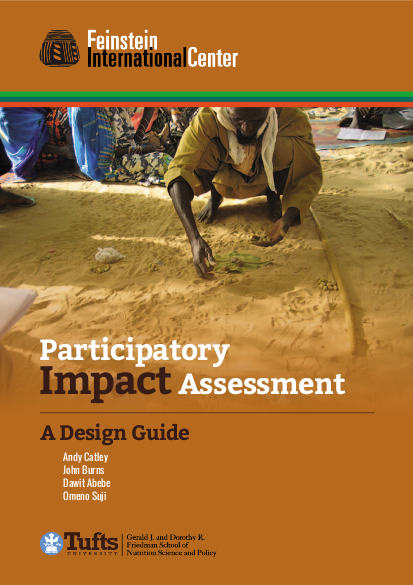
Researchers at the Feinstein International Center have been developing and adapting participatory approaches to measure the impact of aid projects on people’s livelihoods since the early 1990s, covering both development and humanitarian contexts. Drawing upon this experience, this guide aims to provide practitioners with a flexible framework for designing a project-level Participatory Impact Assessment (PIA). Other than in some health, nutrition, and water projects, where indicators of project performance can relate to international standards, for many projects there is no ‘gold standard’ for measuring impact.
This guide aims to bridge the gap by describing a tried and tested approach to measuring the impact of livelihoods projects. The guide avoids standards and indicators, or a blueprint for impact assessment, and instead uses an eight-stage framework which can be adapted to different contexts and project interventions. Similarly, we describe some participatory methods that are particularly useful for understanding impact but which, again, should be adapted to context. In this updated version, the kind and range of examples of PIA has been expanded to include service delivery projects, and the importance of comparisons has been emphasized. Much of the value of PIA is derived from comparing situations at two points in time, or comparing ‘project’ and ‘non-project’ impacts, influences and changes.